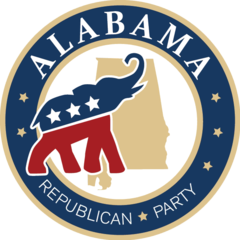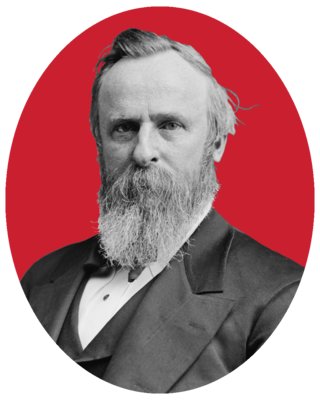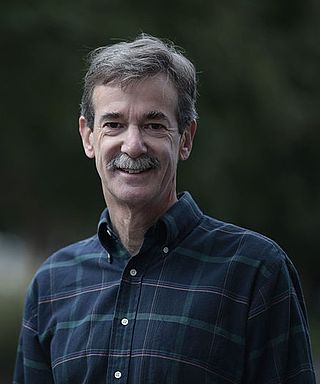
Presidential elections were held in the United States on November 5, 1872. Incumbent President Ulysses S. Grant, the Republican nominee, defeated Democratic-endorsed Liberal Republican nominee Horace Greeley.

Marshall Jewell was a manufacturer, pioneer telegrapher, telephone entrepreneur, world traveler, and political figure who served as 44th and 46th Governor of Connecticut, the US Minister to Russia, the 25th United States Postmaster General, and Republican Party National Chairman. Jewell, distinguished for his fine "china" skin, grey eyes, and white eyebrows, was popularly known as the "Porcelain Man". As Postmaster General, Jewell made reforms and was intent on cleaning up the Postal Service from internal corruption and profiteering. Postmaster Jewell helped Secretary of the Treasury Benjamin H. Bristow shut down and prosecute the Whiskey Ring. President Grant, however, became suspicious of Jewell's loyalty after Jewell fired a Boston postmaster over non payment of a surety bond and asked for his resignation.

Richard Dudley Hubbard was a United States representative and the 48th Governor of Connecticut.

The Alabama Republican Party is the state affiliate of the Republican Party in Alabama. It is the dominant political party in Alabama. The state party is governed by the Alabama Republican Executive Committee. The committee usually meets twice a year. As of the February 23, 2019 meeting in Birmingham, the committee is composed of 463 members. Most of the committee's members are elected in district elections across Alabama. The district members are elected in the Republican Primary once every four years, with the most recent election for the committee having been on June 5, 2018. The new committee takes office following the general election in November 2018. In addition, all 67 county GOP chairmen have automatic seats as voting members. The state chairman can appoint 10 members. Each county committee can appoint bonus members based on a formula that theoretically could add 312 seats, although that formula currently calls for only about 50 seats.

The 1966 Florida gubernatorial election took place on November 8, 1966. During the primary election, the results from the Democratic Party were close among three of the four candidates. Thus, the top two Democrat candidates – incumbent Governor of Florida William "Haydon" Burns and Mayor of Miami Robert King High – competed in a runoff election on May 24, 1966. In an upset outcome, Robert King High was chosen over W. Haydon Burns as the Democratic Gubernatorial nominee. In contrast, the Republican primary was rather uneventful, with businessman Claude Roy Kirk Jr. easily securing the Republican nomination against Richard Muldrew. This was the first time a Republican was elected governor since Reconstruction.

The 1876 Republican National Convention was a presidential nominating convention held at the Exposition Hall in Cincinnati, Ohio on June 14–16, 1876. President Ulysses S. Grant had considered seeking a third term, but with various scandals, a poor economy and heavy Democratic gains in the House of Representatives that led many Republicans to repudiate him, he declined to run. The convention resulted in the nomination of Governor Rutherford B. Hayes of Ohio for president and Representative William A. Wheeler of New York for vice president.

The 2008 congressional elections in Georgia were held on November 4, 2008, to determine who would represent the state of Georgia in the United States House of Representatives, coinciding with the presidential and senatorial elections. Representatives are elected for two-year terms; those elected will serve in the 111th Congress from January 3, 2009, until January 3, 2011.

The Maryland Attorney General election of 2014 was held on November 4, 2014, to elect the Attorney General of Maryland. Incumbent Democratic Attorney General Doug Gansler was eligible to seek a third term in office, but instead ran unsuccessfully for the Democratic nomination for Governor of Maryland.

The 1976 United States presidential election in Minnesota took place on November 2, 1976, as part of the 1976 United States presidential election. Voters chose ten electors, or representatives to the Electoral College, who voted for president and vice president.

The 2016 United States Senate election in Alabama was held on November 8, 2016, to elect a member of the United States Senate to represent the State of Alabama, concurrently with the 2016 U.S. presidential election, as well as other elections to the United States Senate in other states and elections to the United States House of Representatives and various state and local elections.

The 1952 United States presidential election in Minnesota took place on November 4, 1952, as part of the 1952 United States presidential election. Voters chose 11 electors, or representatives to the Electoral College, who voted for president and vice president.

The 1940 United States presidential election in Minnesota took place on November 5, 1940, as part of the 1940 United States presidential election. Voters chose 11 electors, or representatives to the Electoral College, who voted for president and vice president.

The 1932 United States presidential election in Kansas was held on November 8, 1932, as part of the 1932 United States presidential election held throughout all forty-eight contemporary states. State voters chose nine electors, or representatives to the Electoral College, who voted for President and Vice-president.

The 1964 Indiana gubernatorial election was held on November 3, 1964.

The 1878 Connecticut gubernatorial election was held on November 5, 1878. Republican nominee Charles B. Andrews defeated Democratic incumbent governor Richard D. Hubbard with 46.66% of the vote.

The November 1876 Connecticut gubernatorial election was held on November 7, 1876. Democratic nominee Richard D. Hubbard defeated Republican nominee H. Robinson with 50.84% of the vote.

The 1871 Connecticut gubernatorial election was held on April 3, 1871. It was the fourth consecutive contest between the same two major party nominees. Former governor and Republican nominee Marshall Jewell defeated incumbent governor and Democratic nominee James E. English with 50.05% of the vote.

The 1870 Connecticut gubernatorial election was held on April 4, 1870. It was the third consecutive contest between the same two major party nominees. Former governor and Democratic nominee James E. English defeated incumbent governor and Republican nominee Marshall Jewell with 50.48% of the vote.

The 1869 Connecticut gubernatorial election was held on April 5, 1869. It was a rematch of the 1868 Connecticut gubernatorial election. Republican nominee Marshall Jewell defeated incumbent governor and Democratic nominee James E. English with 50.22% of the vote.

The 1868 Connecticut gubernatorial election was held on April 6, 1868. It was the first of four consecutive contests between the same two men. Incumbent governor and Democratic nominee James E. English defeated Republican nominee Marshall Jewell with 50.88% of the vote.
























